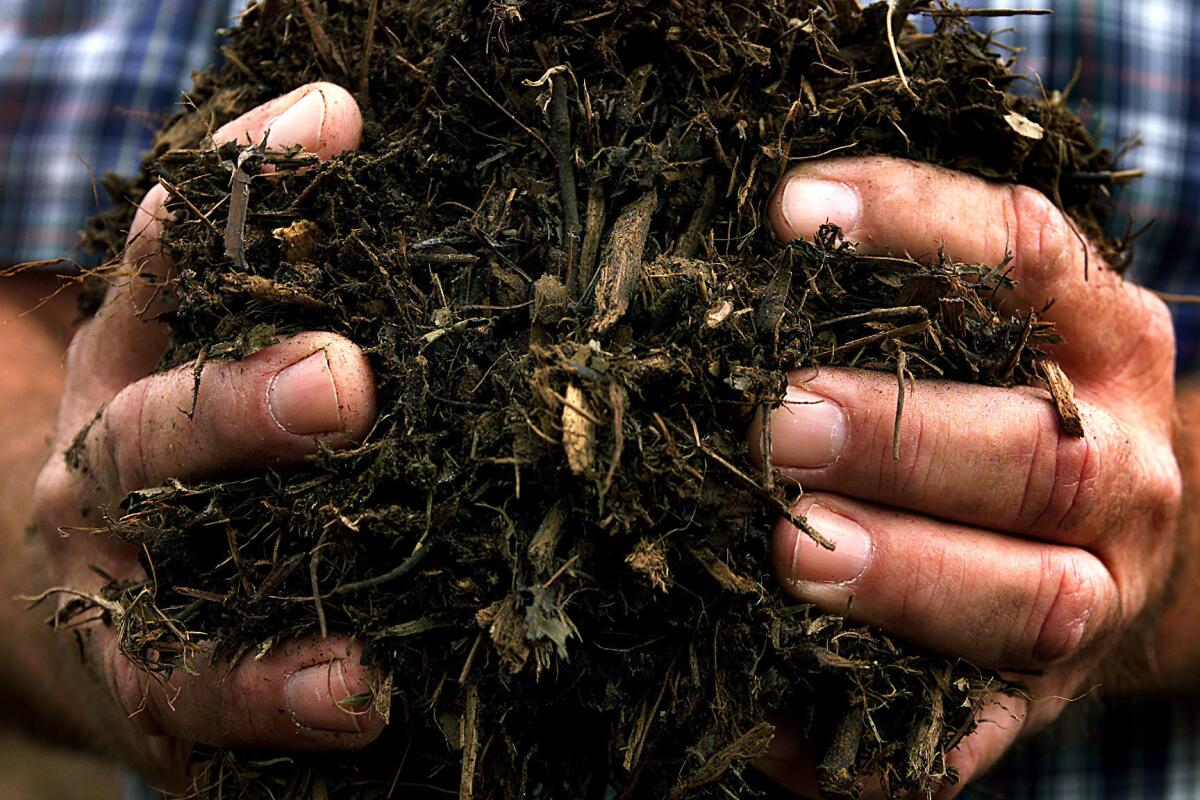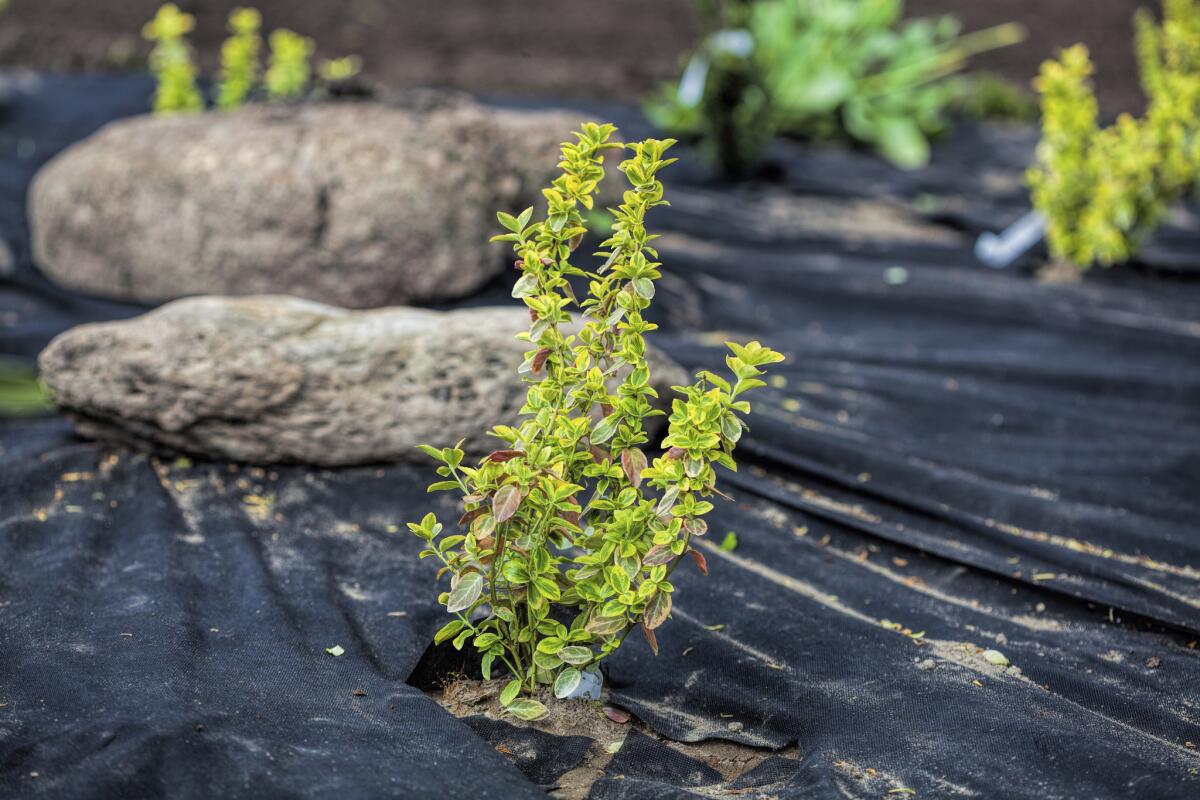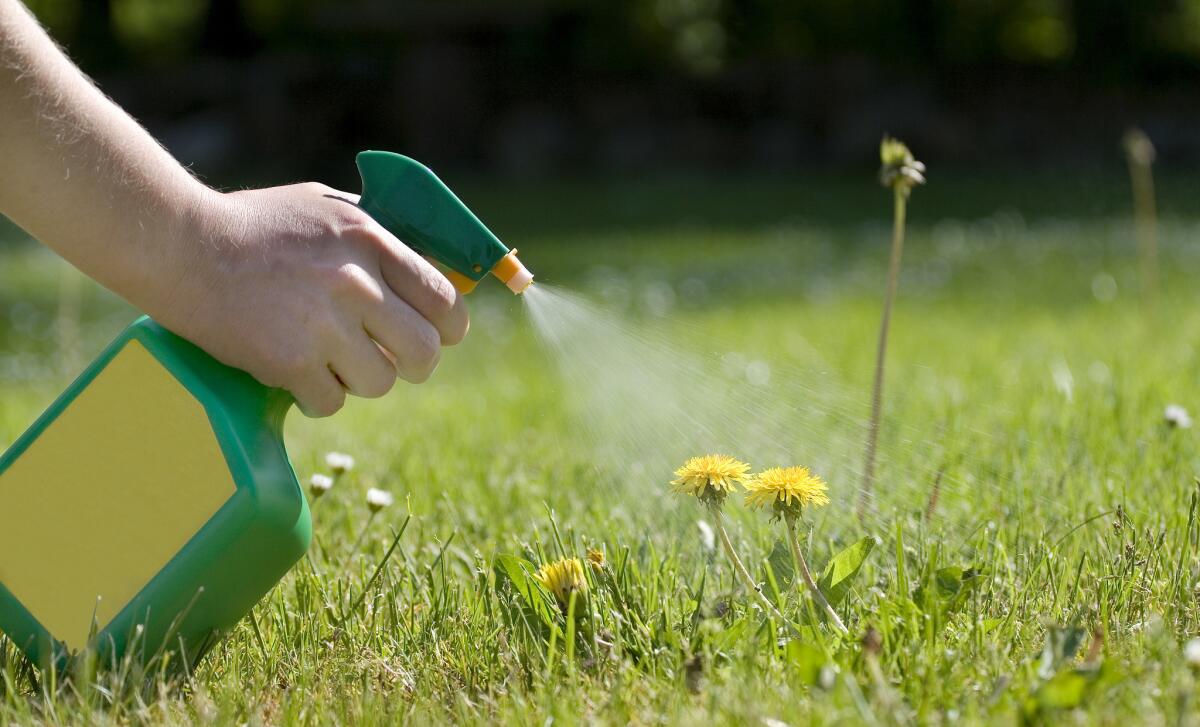The time to fight those weeds is now. Here’s how to do it.
It’s time to get the upper hand on the weeds in your yard.
To do just that we turned to Cheryl Wilen, the go-to expert for fighting weeds and pests for the UC Cooperative Extension in Southern California. Here’s her advice:
Get ‘em while they’re young
Weeds are at their most vulnerable when they’re tiny emerging plants, Wilen said. Weeds like mallow and dandelions send out long tap roots that help the plant regrow even when its top is pulled off, she said, but if you can scrape off the top while the plant is little, those weeds aren’t likely to grow back.
Use a swivel hoe (a better version of the old standard!)
Hoes have long been a garden staple, but Wilen prefers a modified design known as a swivel hoe, also known as a Hula Hoe, or “D” hoe. Weed seeds need to be near the surface of the soil to sprout, she said, and traditional hoes often dig too deep into the ground, bringing up buried seeds. It’s much easier to scrape along the surface with a swivel hoe, decapitating weeds while they’re still tiny. “It’s a bit of exercise,” she said, “but you can do it so quickly, it’s not a problem.” Cost: About $20.
Lots and lots of bark mulch

Use mulch to block the sunlight weeds need to push through the ground.
It doesn’t matter what kind of bark, Wilen said. What’s more important is the size (1/2 inch to 1/4 inch pieces), the depth (at least 2 to 4 inches) and the timing: “You want to put the mulch down before the seeds have time to germinate.” Mulch not only blocks the sunlight weeds need to push through the ground, it also keeps moisture in the soil.
Pro tip: A weed barrier is worth the effort

Weed protection.
Adding a weed barrier fabric below the mulch makes it even more effective, Wilen said. Aim for a non-woven, medium-weight fabric.
What about herbicides?

Spraying away dandelions.
Wilen said the most effective and safest herbicide for home gardens is glyphosate, most commonly known as Roundup. When used as directed, the chemical is toxic to plants but not to animals, Wilen said, and it breaks down almost immediately in the soil. That said, Wilen still prefers to stay on top of weeds with her swivel hoe. “It’s just quicker and easier than pulling out the spray equipment.”











